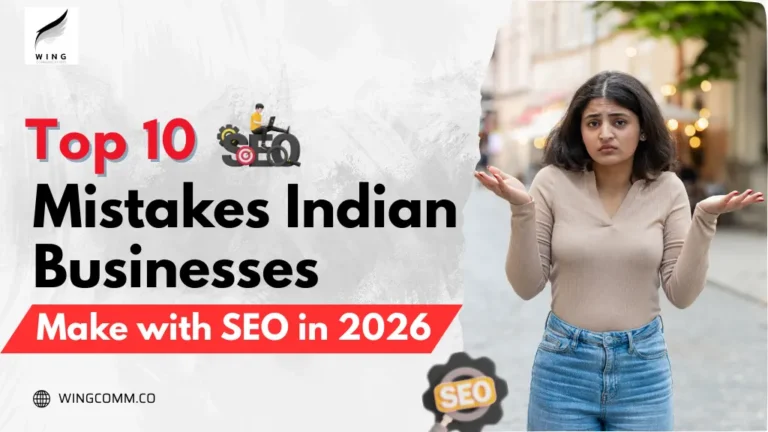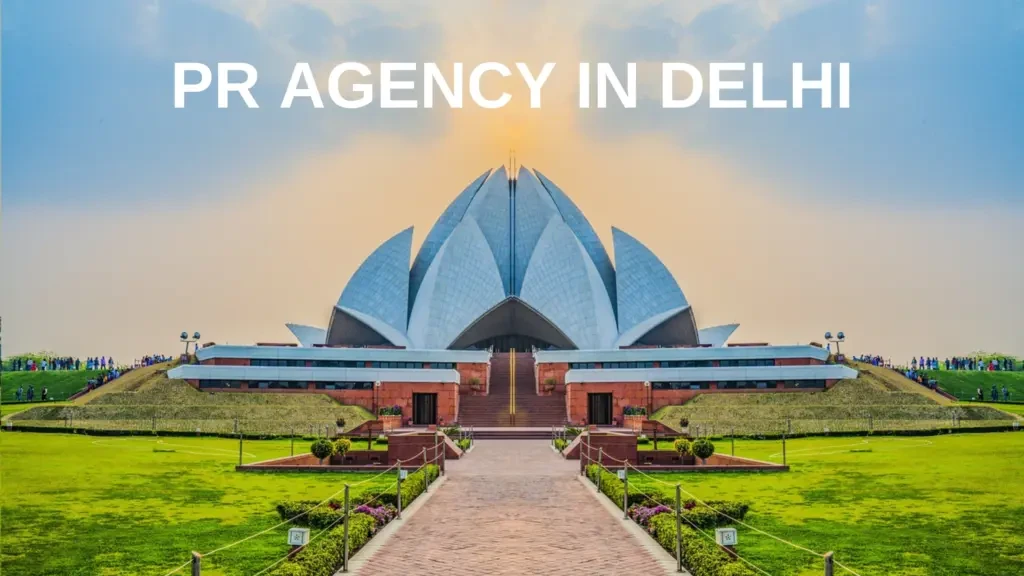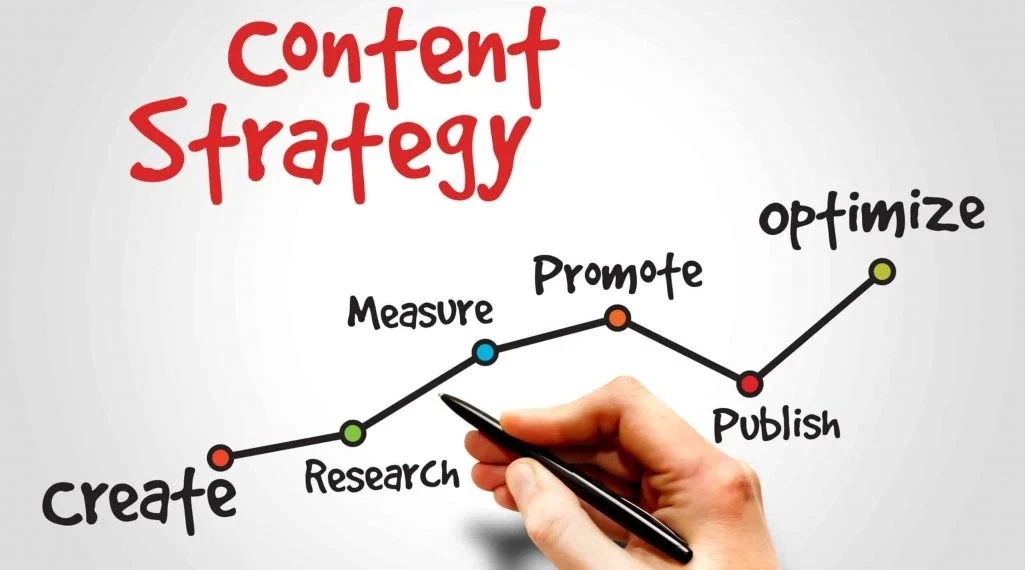Top 10 Mistakes Indian Businesses Make with SEO in 2026
SEO in India 2026 is no longer just about rankings—it’s about authority, trust, and adapting to AI-driven search. From voice and regional SEO to mobile-first design and featured snippets, avoiding these top 10 mistakes can help Indian businesses boost visibility, leads, and long-term growth.
Key Indian SEO & Internet Stats
Ignoring Voice & Regional Search
Overstuffing Keywords

Search Engine Optimization (SEO) is no longer a nice-to-have. In 2026, it will be the backbone of digital visibility in India. With 5G penetration growing fast, regional language internet users surpassing English users, and AI-driven search results changing how people discover brands, SEO has moved from a marketing tactic to a survival strategy.
Yet, thousands of Indian businesses are still stuck with outdated practices or are ignoring SEO altogether. This costs them leads, sales, and credibility.
In this guide, we’ll cover the Top 10 SEO mistakes Indian businesses are making in 2026, supported with reports, data, and insights, and provide clear strategies to fix them.
Key Indian SEO & Internet Stats (2025–26)
| Metric | Source | Value |
|---|---|---|
| Smartphone Ownership | MoSPI Survey (2025) | 85.5% of Indian households own smartphones [web†source] |
| Avg Monthly Data Usage | Nokia MBiT Report (2024) | 27.5 GB per user; 5G traffic tripled [web†source] |
| Voice Search Growth | Livemint (2021, updated 2025 trends) | 270% YoY growth in India [web†source] |
| 5G Subscriptions | Ericsson Mobility Report | Expected 970M by 2030 [web†source] |
| Regional Internet Users | IAMAI-Kantar Report | Non-English users are 3x English users in India |
Book Free Strategy Call
10 Mistakes & Fixes
1. Ignoring Voice & Regional Search
In India, voice search is exploding. From students asking Google Assistant in Hindi to business owners searching in Tamil, regional voice queries are mainstream. According to reports, 270% year-on-year growth is expected in this category.
Fix:
- Optimize for natural language (e.g., “best lawyer near me in Delhi” instead of “Delhi lawyer service”).
- Add regional language content (Hindi, Tamil, Bengali, Marathi).
- Create FAQ-style content for smart speakers & voice assistants.
2. Treating SEO as a Short-Term Project
A major mistake Indian SMEs make is treating SEO as a “3-month campaign.” SEO is ongoing. Google rewards consistency, fresh content, and authority over time.
Fix:
- Build a 12-month SEO roadmap.
- Invest in monthly audits, link building, and content updates.
- Track not just rankings, but also conversion metrics (leads, sales).
3. Overstuffing Keywords
Keyword stuffing was a common practice in the 2010s. But in 2026, Google’s AI models (MUM, BERT) understand context, synonyms, and semantic meaning.
Fix:
- Use semantic SEO. Example: Instead of repeating “best PR agency India,” include related terms like digital PR, media coverage, brand reputation management.
- Write for humans first, then search engines.
4. Weak E-E-A-T (Experience, Expertise, Authority, Trust)
Google now evaluates who is writing content and why they are credible. Many Indian businesses skip author bios, client proof, or trust signals.
Fix:
- Publish author bios with qualifications.
- Add case studies, testimonials, certifications.
- Build backlinks from reputed Indian publications like Economic Times, Mint, YourStory.
5. Slow Websites & Poor Mobile Optimization
India is mobile-first. Over 70% of internet users access via mobile. Yet many businesses have slow, cluttered sites. With Core Web Vitals, speed and mobile UX are direct ranking factors.
Fix:
- Compress images & enable lazy loading.
- Test with Google PageSpeed Insights.
- Use responsive design and optimize for low-bandwidth regions.
6. Copy-Paste or Thin Content
Many businesses lift content from global blogs or competitors. This hurts rankings since Google penalizes duplicates and prioritizes original, useful content.
Fix:
- Create India-specific case studies & examples.
- Write in-depth blogs with local relevance (e.g., “SEO trends for Indian D2C brands”).
- Update old blogs with new stats.
7. Ignoring Featured Snippets & AI Overviews
With Google’s AI Overviews and Featured Snippets, the top result is often a direct answer box. Businesses ignoring this are losing visibility.
Fix:
- Write content in Q&A format.
- Use bullet lists, tables, and short definitions.
- Implement structured data (schema.org) for FAQs, reviews, events.
8. Forgetting Local SEO
From restaurants in Bengaluru to SaaS firms in Pune, local SEO drives leads. Yet, many businesses skip claiming their Google Business Profile.
Fix:
- Claim & optimize Google Business Profile.
- Add accurate NAP (Name, Address, Phone).
- Collect reviews — 5-star reviews are strong trust signals.
9. Not Measuring ROI
A common issue: focusing only on rankings, not results. Ranking #1 for “best laptop 2026” is useless if it doesn’t convert to sales.
Fix:
- Set up Google Analytics 4 & Search Console.
- Track goal completions (calls, forms, purchases).
- Report in terms of ROI, not vanity metrics.
10. Choosing the Wrong SEO Partner
The biggest mistake: hiring “cheap SEO freelancers” who promise #1 in 30 days. These often use black-hat tactics like spammy backlinks, leading to penalties.
Fix:
- Work with trusted SEO agencies.
- Ask for case studies and references.
- Ensure reporting is transparent with clear deliverables.
Industry Voices
“Indian businesses that treat SEO as a side-task will struggle in the AI-driven search era. The winners are those who integrate SEO into brand, content, and PR strategies.” — Digital India Report 2025
“With non-English internet users tripling English users in India, regional content SEO is no longer optional — it’s survival.” — IAMAI-Kantar 2025 Study
SEO in 2026 is not about tricking Google — it’s about earning trust, building authority, and serving user intent.
To recap, avoid these 10 mistakes:
- Ignoring voice/regional search
- Short-term SEO thinking
- Keyword stuffing
- Weak authority signals
- Poor mobile UX & speed
- Duplicate/thin content
- Ignoring snippets & AI Overviews
- Skipping local SEO
- Not measuring ROI
- Choosing wrong partners
Indian businesses that adapt to these shifts will see compounded growth in traffic, leads, and sales. Those who don’t will get left behind by smarter competitors.
Want to know where your business stands? Download WingComm’s SEO Audit Checklist 2026 and uncover the hidden gaps in your digital presence.
Proof & Outcomes: Real SEO Wins in India
Voice + regional SEO drove 4.5x organic traffic and cut paid ad spend by 35% in six months.
D2C Skincare Brand (Mumbai)
Semantic SEO boosted Top 3 keyword rankings and improved lead quality by 40% in 8 months.
Fintech Startup (Bangalore)
Local SEO and structured data led to a 60% rise in demo sign-ups in five months.
EdTech Company (Delhi NCR)
FAQs on SEO Mistakes & Fixes in 2026
What is the most common SEO mistake Indian businesses make in 2026?
Treating SEO as a one-time project instead of a long-term investment. Consistent optimization, content updates, and authority-building are key to sustainable rankings.
How important is voice and regional SEO for Indian businesses?
Extremely important. With non-English internet users tripling English users and voice search growing at 270% YoY, optimizing for natural language and regional content is critical for reach.
How can businesses measure SEO ROI instead of just rankings?
Track leads, demo requests, purchases, and customer lifetime value (LTV) through tools like Google Analytics 4 and Search Console. Metrics like cost per lead (CPL) and conversion rates show true ROI.
Does Google’s AI-driven search (SGE) change traditional SEO tactics?
Yes. SGE prioritizes helpful, authoritative, and context-rich content. Businesses must focus on E-E-A-T, structured data, and conversational queries to appear in AI Overviews and featured snippets.
Book a Free PR Strategy Session
Tell us a bit about your brand and goals. We’ll share a tailored press plan and timeline.




